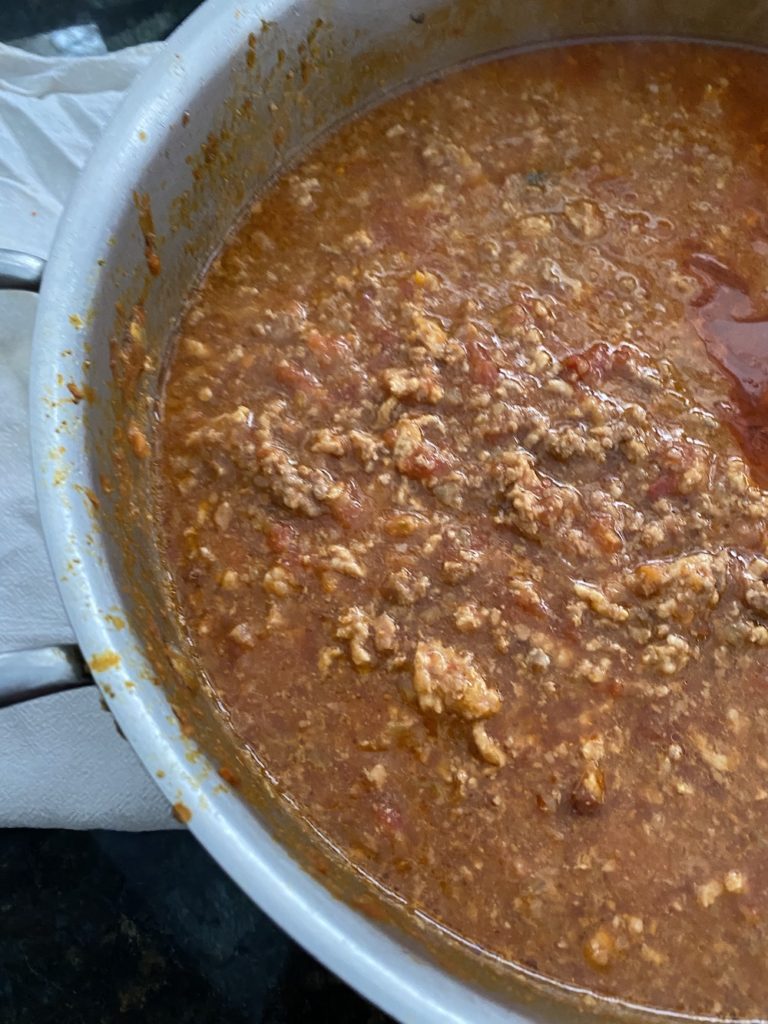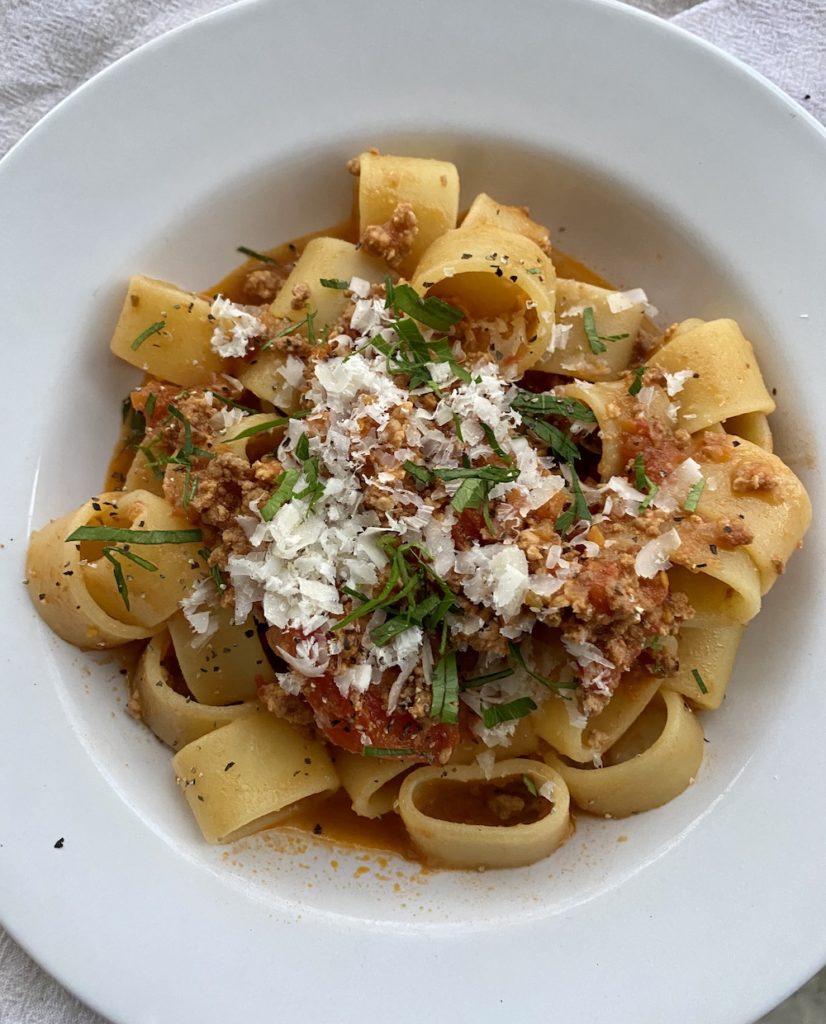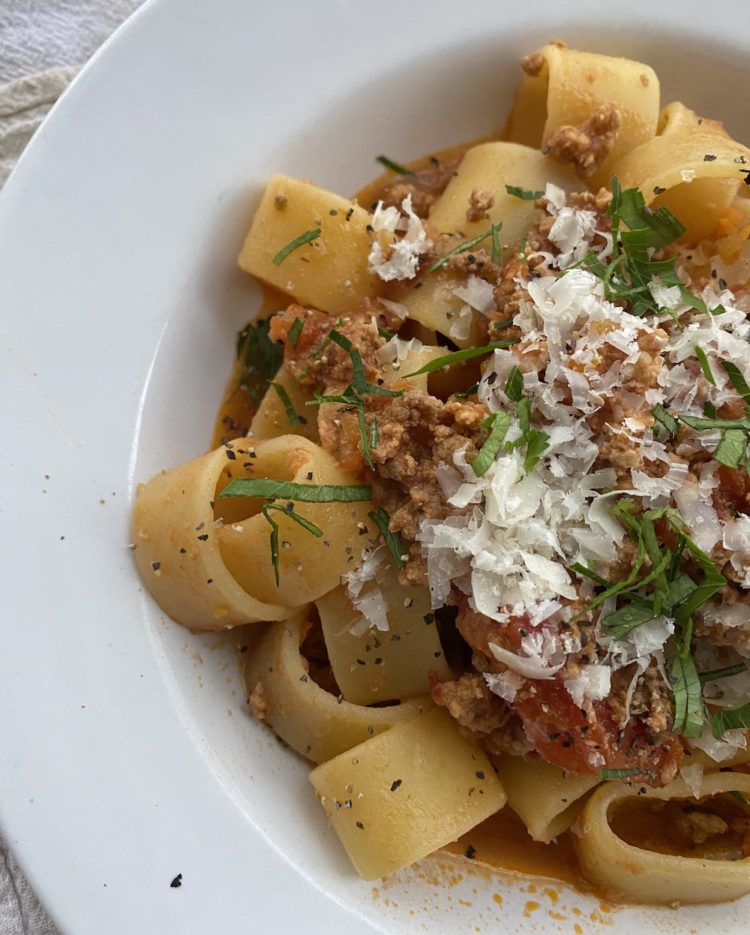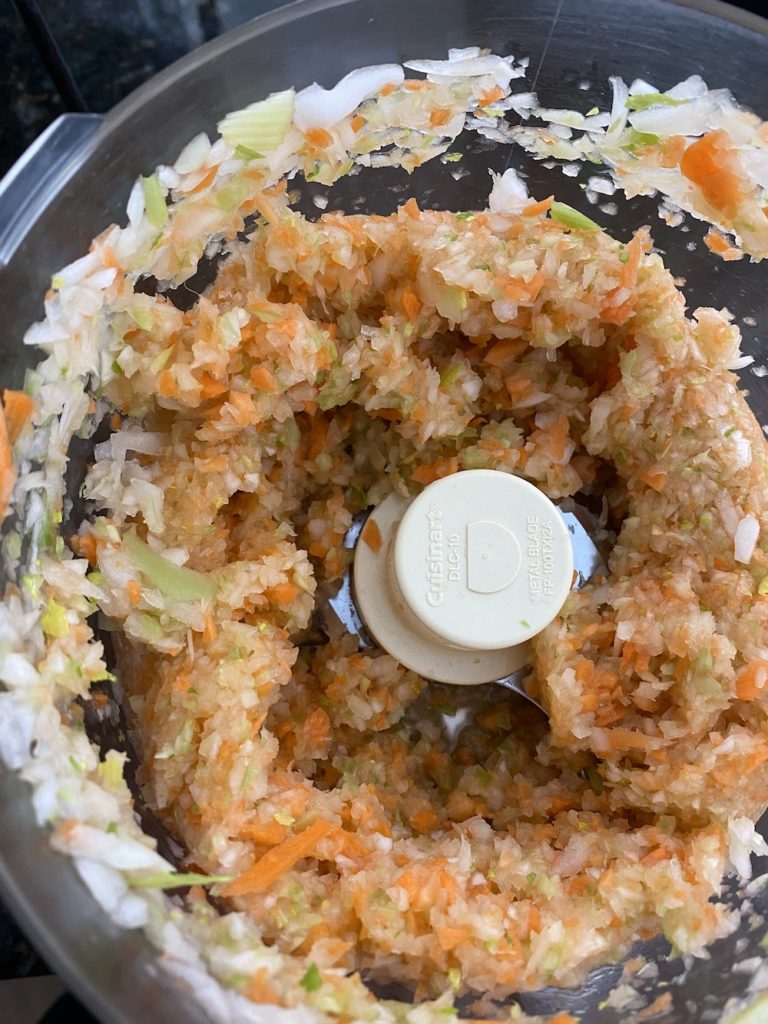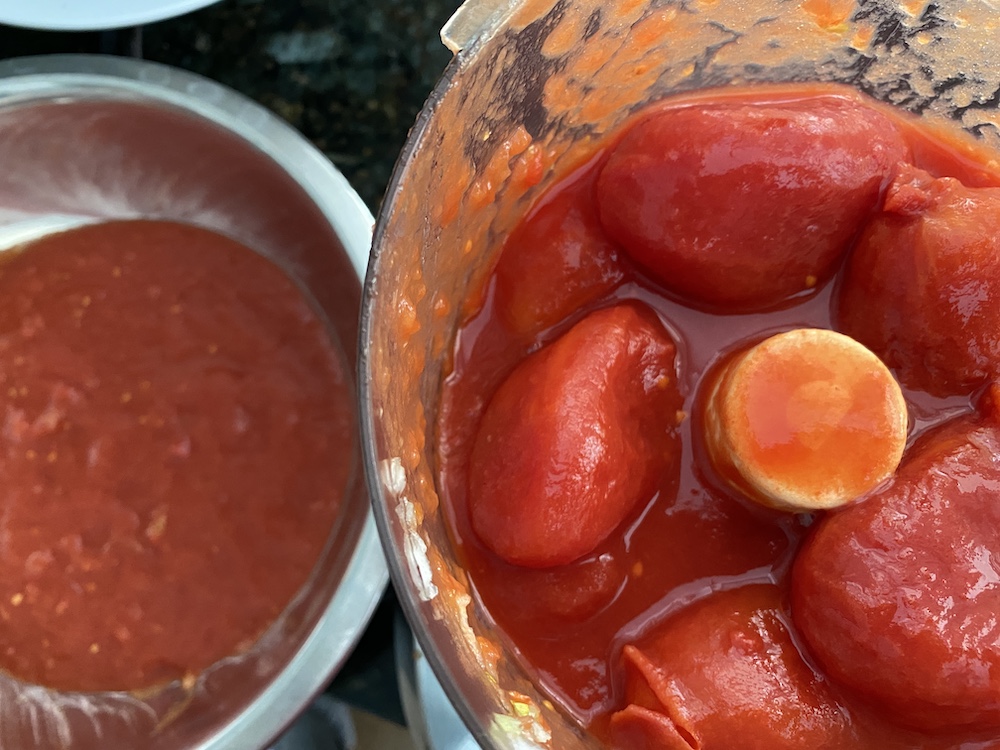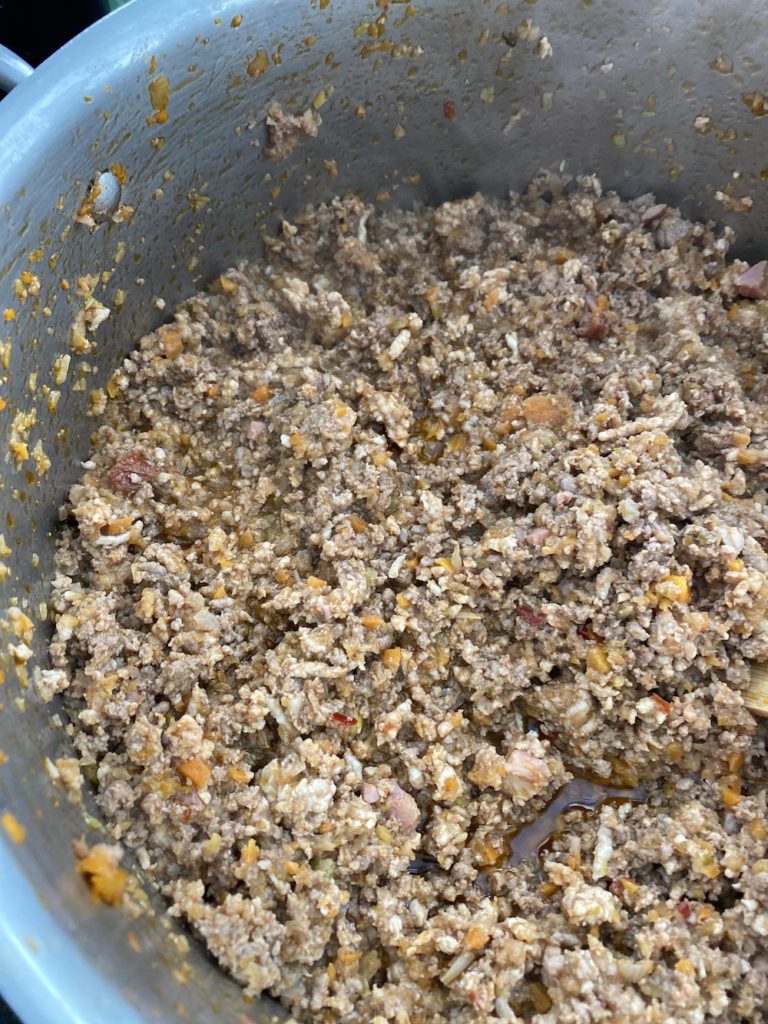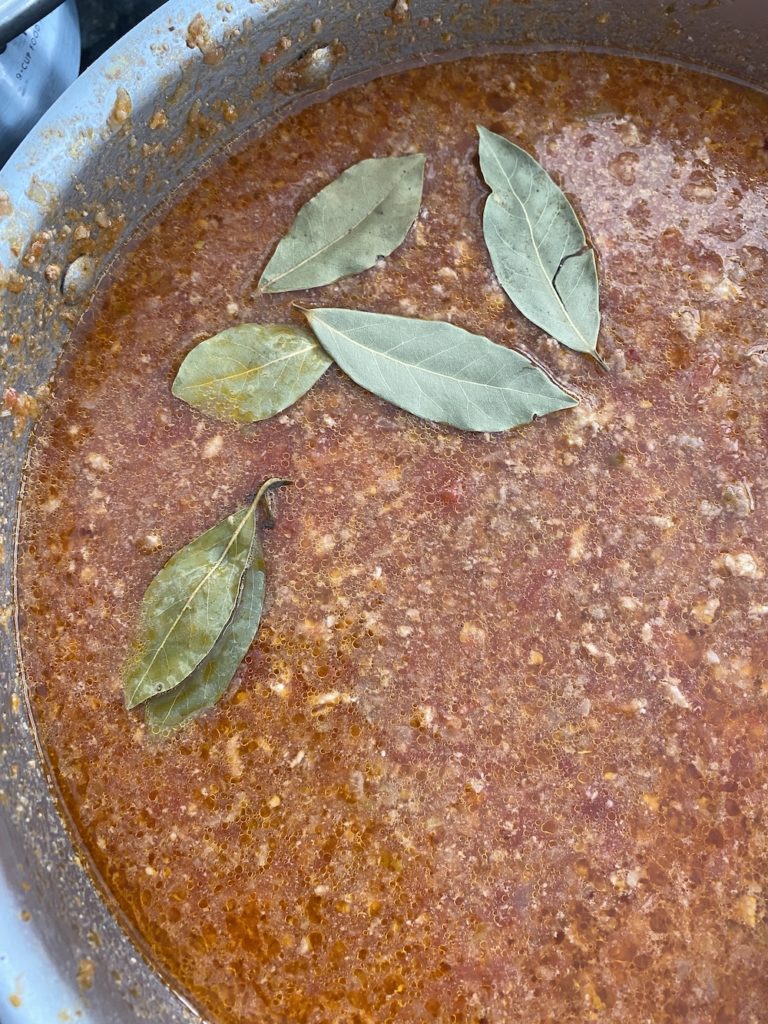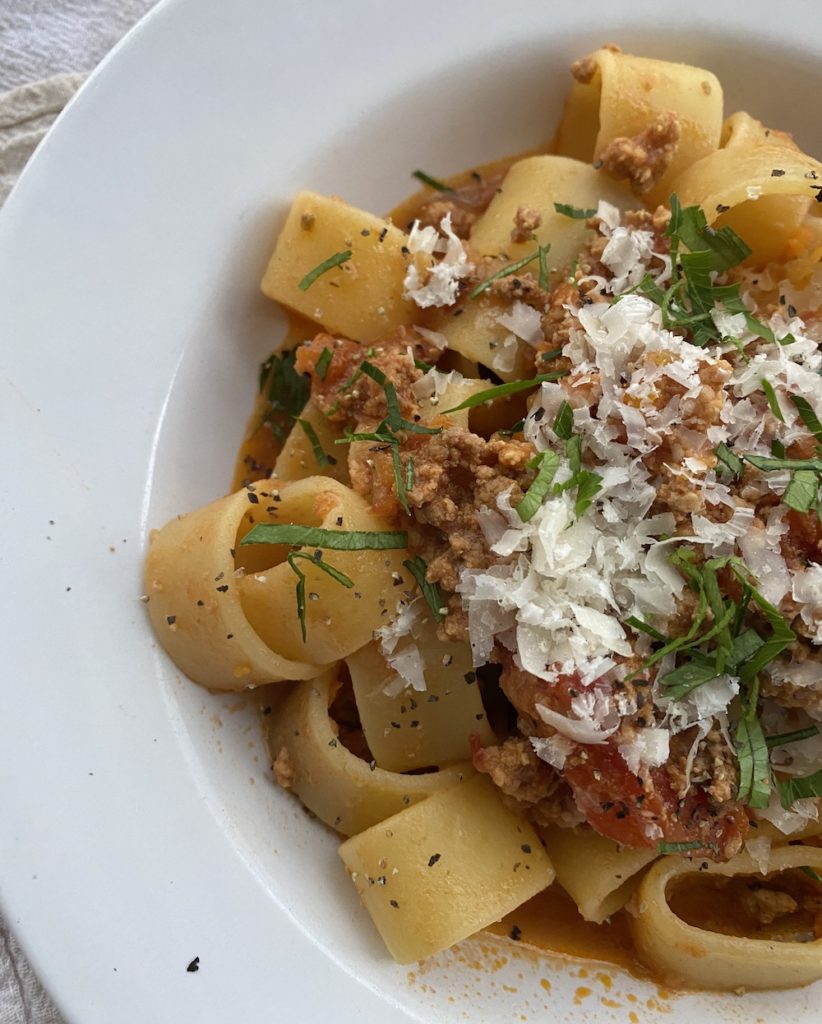
It’s a snow day around here and my kitchen is begging for a slow-cooked meal. Bolognese fits that bill. When you think of Bolognese you probably think of a meat sauce. Yes, a true Bolognese does include meat (like Marcella’s Hazan’s famous recipe) but it also contains dairy like milk or cream. With so many versions, a few characteristics are constant: a mirepoix (celery, carrots, onion), sautéed meats (pork, beef and pancetta), San Marzano tomatoes, wine, aromatics, and beef or chicken broth. The sauce is best after a long, slow simmer (2 1/2- 3 hours) to create a hearty, deep meaty flavor. Serve the sauce over tagliatelle or pappardelle. However, the pasta pictured, calamarata, catches all that yum inside the rings. Note: Whenever you create a recipe that takes a good portion of your day, double or triple the recipe and freeze. I plan on making the BEST Bolognese/ Bechamel lasagna in a few weeks.
The Best Bolognese
- 3 tablespoonse xtra virgin olive oil
- 3 tablespoons butter
- 1 yellow onion , roughly chopped into 1-inch pieces
- 1 celery stalk , roughly chopped into 1-inch pieces
- 1 carrot , peeled and roughly chopped into 1-inch pieces
- 1 28-ounce can whole San Marzano tomatoes in juice , about 3 cups
- 8 ounces pancetta , cut into 1/2-inch chunks
- 2 tablespoons tomato paste
- 1 pound 80/20 blend ground chuck beef
- 1 pound ground pork
- 1/2 teaspoon red pepper flakes
- 1/2 cup dry white wine
- 1 cup whole milk , 2% milk fat can be substituted
- 2 cups beef or chicken broth
- 3 bay leaves
- 1 teaspoon kosher salt
- In a large Dutch oven or heavy bottom pot, add the olive oil and butter over medium heat. In a food processor (makes this process so much easier), pulse the onion, celery, and carrot until finely chopped. Cook, stirring occasionally, until the vegetables are soft and golden, about 5-7 minutes.
- While the vegetables are cooking, add the tomatoes with their juice to the food processor and pulse 5-7 times until smooth. Transfer to a bowl and set aside. Wipe out the food processor, then add the pancetta to the bowl. Pulse until the pancetta is a coarse paste. Set aside.
- Add the tomato paste to the Dutch oven and cook for about 10 minutes until the paste begins to brown, stirring when needed so it doesn’t burn. Add the ground chuck, pork, and pancetta to the pot along with the red pepper flakes. Use a wooden spoon to break the meat apart as it cooks, just until lightly browned and the meat loses its raw edge. Add the wine and cook until the wine is almost all absorbed, about 10 minutes, stirring to scrape up any browned bits. Add the milk and cook until it has evaporated, which will take about 30 minutes, stirring and breaking up the meat more as it cooks.
- Add the tomatoes, broth, bay leaves, and kosher salt. Bring to a simmer then reduce the heat to the lowest setting so it cooks with barely a bubble breaking the surface occasionally. Cook for 2 1/2 to 3 hours until the meat is tender and the sauce has reduced and thickened to become rich and dark in color. Toward the end of cooking, a layer of oil will likely rise to the top. Spoon off the oil. The longer you cook the sauce the better it will become. If the sauce seems to dry out, add 1/4 cup hot water at a time as needed.
- Serve the sauce over wide egg or pasta noodles such as pappardelle, tagliatelle, fettuccine, or rigatoni. Serve topped with fresh grated Parmesan cheese and parsley.
Adapted from: Foodie Crush
